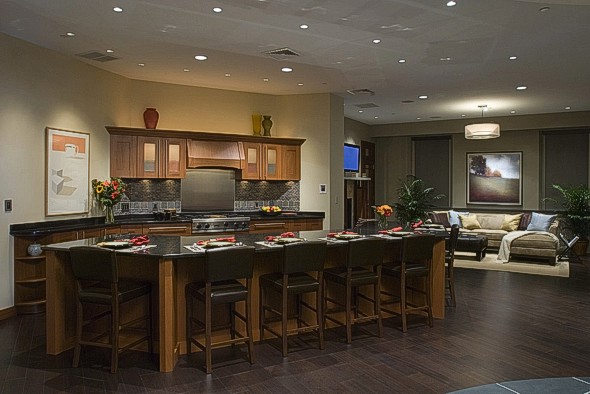New Lighting Technologies Reduce Building Operating Costs by Nearly Half, Says Study
 August 4, 2010
August 4, 2010  Kyriaki (Sandy) Venetis
Kyriaki (Sandy) Venetis It’s common knowledge that in today’s world, the easiest way to reduce costs in any environment is by switching to more energy efficient lighting. While this is true, the process for selecting the most energy efficient lighting choices and control technologies depends largely on type of environment they will be illuminating.
 Energy efficient residential lighting. Photo courtesy of techhomeelectric.com.
Energy efficient residential lighting. Photo courtesy of techhomeelectric.com.
Factors that need to be taken onto consideration include whether the environment is indoors or outdoors; residential or commercial; the property size; and the amount of available natural light when deciding on the needs of an area.
To find out how much energy a commercial building could save by changing both its bulbs and control technologies, researchers from the National Research Council of Canada conducted a field study to determine what strategies would provide the best saving in an office building setting.
The yearlong study was conducted from the eighth to eleventh floor of a 12-story rectangular, curtain-walled building in Burnaby, British Columbia. The interior space was set up in a way that’s familiar to most office workers.
The study floors consisted mostly of open-plan areas furnished with cubicle-style workstations and no private offices. A few enclosed areas were located at the core of the building providing shared spaces for meeting rooms, break rooms, and storage. All of the perimeter workstations had two or three window panes equipped with manual blinds.
This study was conducted by integrating three different lighting systems into each workstation for both maximum effect and to see which were independently the biggest energy savers.
- Occupancy sensors - They detect activity within a certain area and turn on automatically when someone enters a room. They reduce energy by turning lights off soon after the last occupant has left the room. A sensor needs to be located where it will detect occupant activities. There are two types of occupancy sensors: ultrasonic and infrared. Ultrasonic sensors detect sound, while infrared sensors detects heat and motion.
- Light sensors - They monitored the surrounding illumination levels and dimmed when enough light was present - either from daylight or neighboring artificial lights - to meet the preset desired illumination specifications.
- Individual controls - They consisted of on-screen sliders located on the workers’ desktop computers that allowed both on and off switching, or dimming to preferred light levels.
The results indicated that:
The three controls combined (and operating alternately depending on the circumstances) saved 42 percent to 47 percent in lighting energy compared to the same lights used at full power during work-hours.
If the three lighting control systems had been installed separately, occupancy sensors would have saved, on average, 35 percent if used alone, light sensors (daylight harvesting) 20 percent, and individual dimming 11 percent.
With some modification, many of these options can also be implemented in a residential setting. These devices can be found in most large hardware stores or online.
In home environments, light photosensors are best used in outdoors settings for either decorative or security purposes. Occupancy motion sensors can also be used for security purposes.
In addition, occupancy sensors can provide indoor convenience and energy savings by turning on automatically when someone enters a room and turning off when the last person leaves.
Lighting dimmers are another way to save indoor energy costs. Dimmer controls provide variable indoor lighting for incandescent and florescent bulbs. When you dim bulbs, it reduces both their wattage and output.
Off-the-shelf dimmers for incandescent fixtures are inexpensive and provide some energy savings. The dimmers increase the life of the bulbs, but the tradeoff is that they reduce illumination more than they reduce wattage, which means less than optimal energy savings.
In contrast, florescent dimmers are dedicated fixtures and bulbs that provide greater energy savings. Overall, florescent bulbs use 25 to 35 percent of the energy of incandescents to provide the same amount of illumination. They also last about 10 times longer (7,000 - 24,000 hours), according to the U.S. Department of Energy.
Lighting professionals in stores or online should always be consulted to determine what model of a particular type of lighting system is most appropriate for a consumer’s needs.
Reader comments and input are always welcomed!
